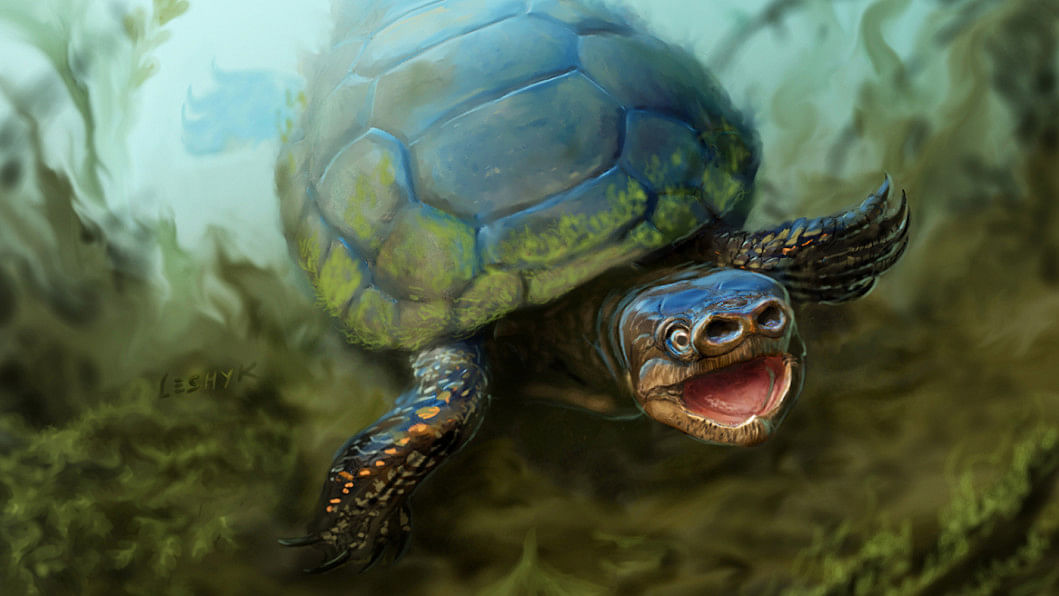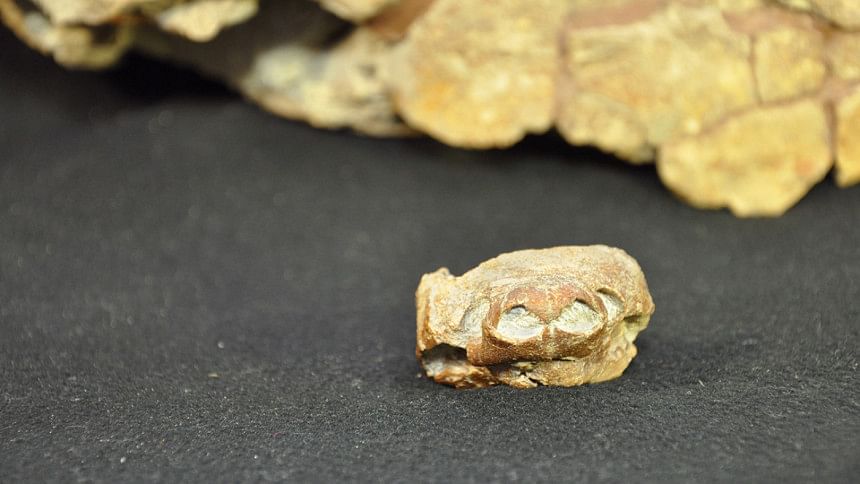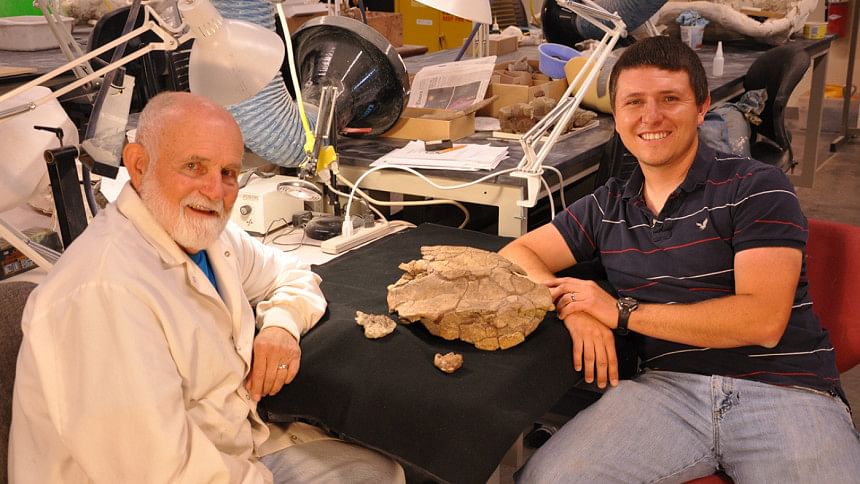Meet Golden's bacon turtle, an extinct species with pig snout

Scientists have discovered one of the most complete skeletons of a turtle from the age of dinosaurs, and its nose looks an awful lot like that of a pig, reports CNN.
Golden's bacon turtle, also known as Arvinachelys goldeni, gets its name from its unique broad snout, which has two bony nasal openings -- unlike any turtle ever found. All other turtles have just one external nasal hole in their skulls; the division between their nostrils is only fleshy, the American news agency said.
This newly discovered turtle species has long been extinct; a team from the Natural History Museum of Utah recently found it in Grand Staircase-Escalante National Monument.
"It's one of the weirdest turtles that ever lived," said Joshua Lively, who described the new species in the Journal of Vertebrate Paleontology. Lively studied the fossil as part of his master's thesis at the University of Utah.

"With only isolated skulls or shells, we are unable to fully understand how different species of fossil turtles are related, and what roles they played in their ecosystems," said Randall Irmis, curator of paleontology at the museum and associate professor at the University of Utah.

Back then, southern Utah was more like present-day Louisiana: wet and hot, full of rivers, bayous and lowland flood plains, conditions for which this pig-snouted turtle was well-suited.
Coming in around 2 feet long from head to tail, its streamlined shell was made for a riverine environment alongside tyrannosaurs, armored ankylosaurus, giant duck-billed dinosaurs and other dinosaurs that left fossil remains in southern Utah.
Getting back to that name: Arvinachelys goldeni comes from arvina, a Latin word for pig fat or bacon, and chelys, for tortoise. Goldeni honors Jerry Golden, a volunteer fossil preparator at the Natural History Museum of Utah, who prepared a physical reproduction of the specimen.
Meet Golden's bacon turtle, an extinct species https://t.co/DXwMg4bY4V pic.twitter.com/UPStIArAgv
— CNN (@CNN) October 24, 2015
"Volunteers are involved in every aspect of what we do, from field work and digging up specimens to preparing them," Irmis said. "In 2014, volunteers provided 14,500 hours of work. It's a massive contribution. We couldn't do what we do without them. We really consider them key team members."

 For all latest news, follow The Daily Star's Google News channel.
For all latest news, follow The Daily Star's Google News channel. 



Comments